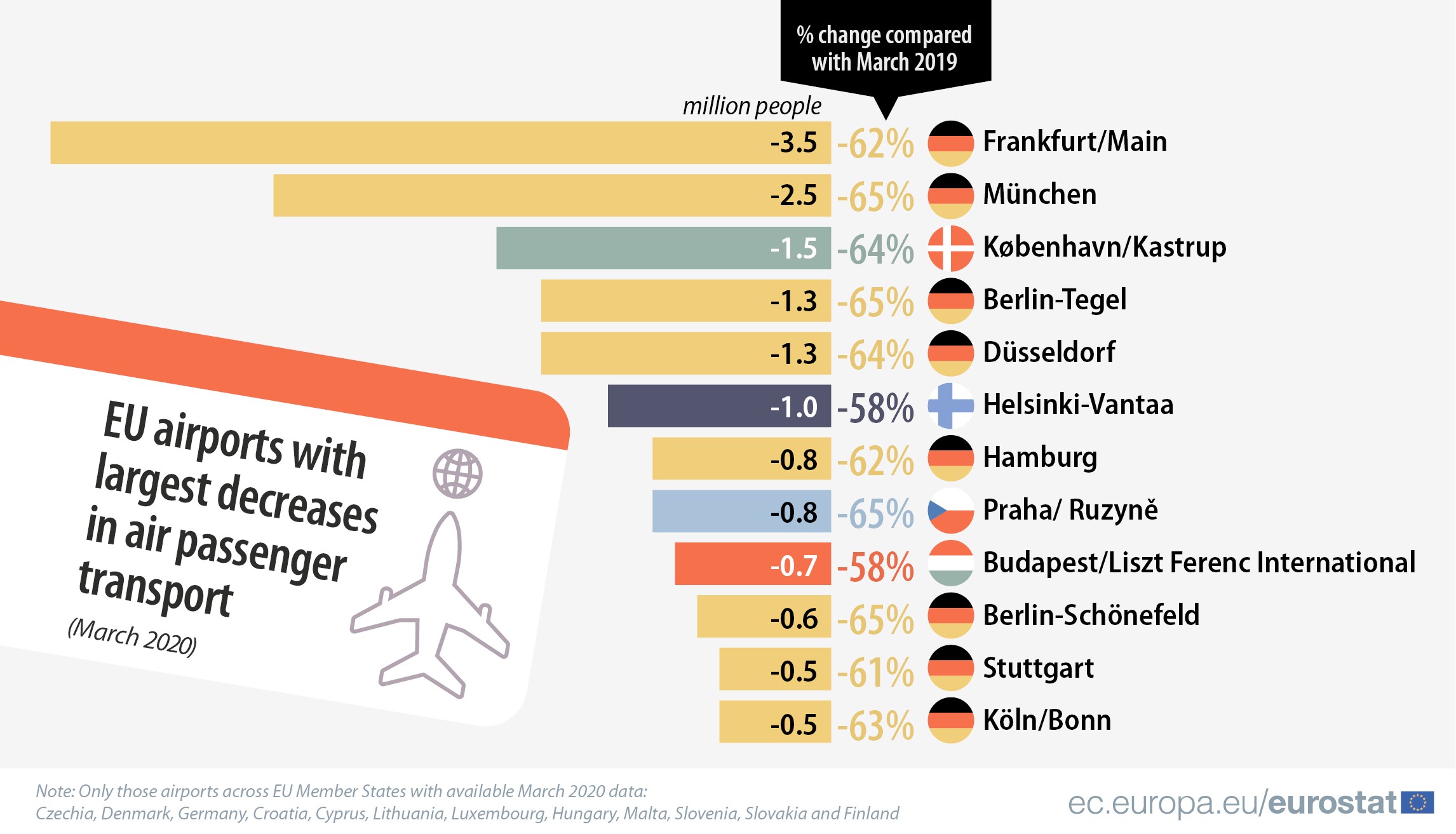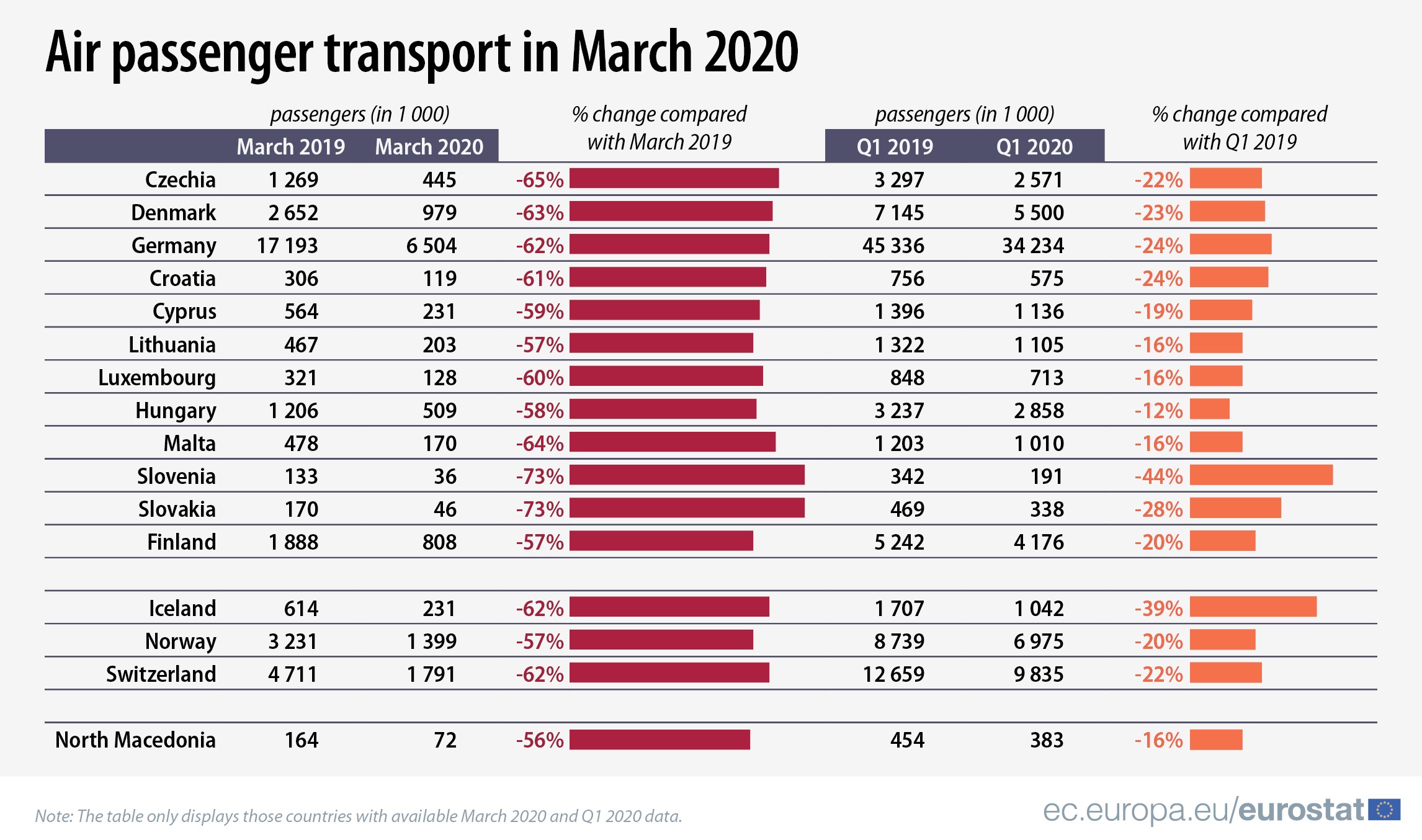To prevent the spread of the COVID-19 pandemic, countries around the world have taken a variety of restrictive measures. First 2020 numbers already show their significant impact on air transport for all 13 EU Member States with available data: Czechia, Denmark, Germany, Croatia, Italy (see country note), Cyprus, Lithuania, Luxembourg, Hungary, Malta, Slovenia, Slovakia and Finland.
Whilst the number of air passengers in some of these EU Member States started to decrease already in February 2020, the number of passengers at least halved in all of them in March 2020. Compared with March 2019, the largest decreases in numbers of passengers were observed in Italy (-85%, -11.9 million (see country note)), Germany (- 10.7 million passengers carried, -62%), Denmark (-1.7 million, -63%), Finland (-1.1 million, -57%), Czechia (-0.8 million, -65%) and Hungary (-0.7 million, -58%).
Source datasets: ttr00016 and avia_paoc
Frankfurt/Main airport: highest drop in passenger numbers
The vast majority of the EU’s airports with available March 2020 data registered a sharp decrease in the number of passengers handled compared with March 2019.
The numbers of passengers carried fell by more than a million in: Frankfurt/Main (-3.5 million, -62%), München (-2.5 million, -65%), København/Kastrup (-1.5 million, -64%), Berlin-Tegel (-1.3 million, -65%), Düsseldorf (-1.3 million, -64%) and Helsinki-Vantaa (-1.0 million, -58%).
Sharp decreases were also recorded in other EU airports: Hamburg (-0.8 million, -62%), Praha/ Ruzyně (-0.8 million, -65%), Budapest/Liszt Ferenc International (-0.7 million, -58%), Berlin-Schönefeld (-0.6 million, -65%), Stuttgart (-0.5 million, -61%) and Köln/Bonn (-0.5 million, -63%).
Source datasets: ttr00017 and avia_paoa
Although Italian data are not available in absolute numbers (see country note), sharp drops in passengers arriving and departing were recorded in all Italian airports with available data. The highest decreases were reported in Milan Linate (-93%), Bergamo and Venice (both -90%), Milan Malpensa (-88%) and Bologna (-86%).
Are you looking for recent data on air transport in the EU, EFTA or candidate countries?
Source datasets: ttr00016 and avia_paoc
Methodological note:
- Passengers carried: Refers to all passengers on a particular flight (with one flight number) counted once only and not repeatedly on each individual stage of that flight. It includes all revenue and non-revenue passengers whose journey begins or terminates at the reporting airport and transfer passengers joining or leaving the flight at the reporting airport as well as transfer passengers. Direct transit passengers are excluded.
- Italy: Data on passengers refers to the total number of passengers arriving and departing, including direct transit passengers and general aviation passengers. The total reflects the overall number of passengers who passed through the airports monitored by Assaeroporti. Data source is the press release of ISTAT – Italian National Institute of Statistics.
To contact us, please visit our User Support page.
For press queries, please contact our Media Support.




